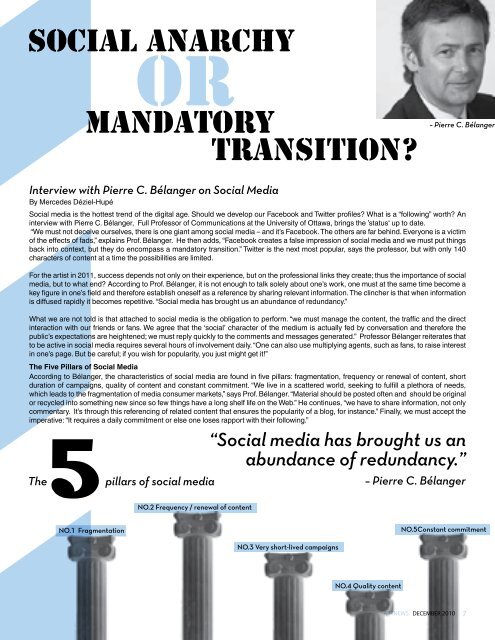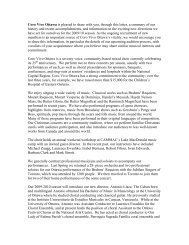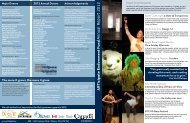March 2011 arTSOE.ca - Arts Ottawa East / Arts Ottawa Est
March 2011 arTSOE.ca - Arts Ottawa East / Arts Ottawa Est
March 2011 arTSOE.ca - Arts Ottawa East / Arts Ottawa Est
You also want an ePaper? Increase the reach of your titles
YUMPU automatically turns print PDFs into web optimized ePapers that Google loves.
Interview with Pierre C. Bélanger on Social Media<br />
By Mercedes Déziel-Hupé<br />
Social media is the hottest trend of the digital age. Should we develop our Facebook and Twitter profiles? What is a “following” worth? An<br />
interview with Pierre C. Bélanger, Full Professor of Communi<strong>ca</strong>tions at the University of <strong>Ottawa</strong>, brings the ’status‘ up to date.<br />
“We must not deceive ourselves, there is one giant among social media – and it’s Facebook. The others are far behind. Everyone is a victim<br />
of the effects of fads,” explains Prof. Bélanger. He then adds, “Facebook creates a false impression of social media and we must put things<br />
back into context, but they do encompass a mandatory transition.” Twitter is the next most popular, says the professor, but with only 140<br />
characters of content at a time the possibilities are limited.<br />
For the artist in <strong>2011</strong>, success depends not only on their experience, but on the professional links they create; thus the importance of social<br />
media, but to what end? According to Prof. Bélanger, it is not enough to talk solely about one’s work, one must at the same time become a<br />
key figure in one’s field and therefore establish oneself as a reference by sharing relevant information. The clincher is that when information<br />
is diffused rapidly it becomes repetitive. “Social media has brought us an abundance of redundancy.”<br />
What we are not told is that attached to social media is the obligation to perform. “we must manage the content, the traffic and the direct<br />
interaction with our friends or fans. We agree that the ‘social’ character of the medium is actually fed by conversation and therefore the<br />
public’s expectations are heightened; we must reply quickly to the comments and messages generated.” Professor Bélanger reiterates that<br />
to be active in social media requires several hours of involvement daily. “One <strong>ca</strong>n also use multiplying agents, such as fans, to raise interest<br />
in one’s page. But be <strong>ca</strong>reful; if you wish for popularity, you just might get it!”<br />
The Five Pillars of Social Media<br />
According to Bélanger, the characteristics of social media are found in five pillars: fragmentation, frequency or renewal of content, short<br />
duration of <strong>ca</strong>mpaigns, quality of content and constant commitment. “We live in a s<strong>ca</strong>ttered world, seeking to fulfill a plethora of needs,<br />
which leads to the fragmentation of media consumer markets,” says Prof. Bélanger. “Material should be posted often and should be original<br />
or recycled into something new since so few things have a long shelf life on the Web.” He continues, “we have to share information, not only<br />
commentary. It’s through this referencing of related content that ensures the popularity of a blog, for instance.” Finally, we must accept the<br />
imperative: “It requires a daily commitment or else one loses rapport with their following.”<br />
“Social media has brought us an<br />
abundance of redundancy.”<br />
ARTNEWS DECEMBER 2010 7









